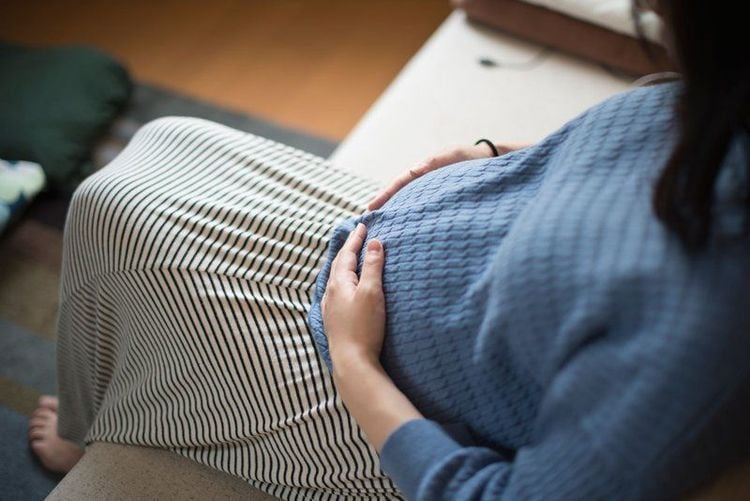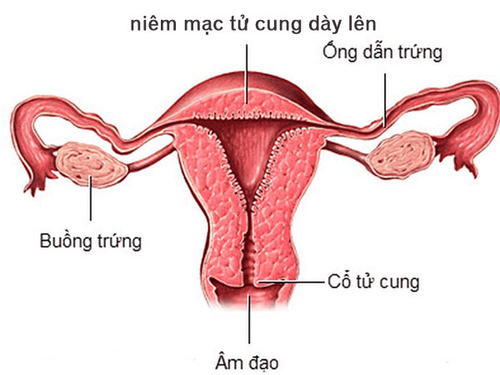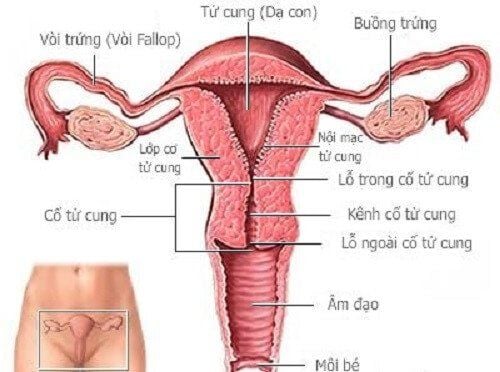This article is professionally consulted by M.S, M.D Nguyen Thi Hong On - Department of Obstetrics and Gynecology - Vinmec Phu Quoc International General Hospital.
Cervical lacerations are common in cases of difficult labor, such as when forceps assistance is required or premature pushing occurs when the cervix is not fully dilated. They can also occur during large dilation and evacuation procedures. In cases of large cervical lacerations causing significant bleeding, doctors will perform a surgical repair to stop bleeding after the delivery of the fetus and the placenta. The remaining cases of small lacerations may stop bleeding spontaneously after delivery of the foetus.
1. What is a cervical laceration? Causes and classification
A cervical laceration is a tear in the lower or upper part of the vaginal attachment. Cervical lacerations are common in cases of difficult labor, requiring forceps assistance or premature pushing when the cervix is not fully dilated,and sometimes due to large dilation and evacuation.
In cases of large cervical lacerations causing significant bleeding, doctors will perform a surgical repair to stop bleeding after the delivery of the fetus and the placenta. Cases of small lacerations may stop bleeding spontaneously after delivery of the foetus.
Causes of cervical lacerations include sclerosis from old tears, after cervical amputation surgery, after electrocautery of the cervix, cervical edema, inflammation due to prolonged labor, premature pushing causing tears, vaginal delivery due to large fetus, suction cup,...
Symptoms of cervical lacerations: Bleeding that occurs before or after fetal delivery, with well-contracted uterus and oxygenated blood. On speculum examination, a laceration was found extending from the fornix to the external os.

Classification of cervical laceration degree:
Cervical laceration (CL) is a common injury that may or may not be accompanied by vaginal and perineal lacerations. Depending on the injury, lacerations are classified as:
- Cervical laceration below the vaginal attachment, mild injury, with varying degrees of bleeding depending on the location of the laceration
- Cervical laceration above the vaginal attachment, mild injury, with varying degrees of bleeding depending on the location of the laceration
- Cervical lacerations often cause significant bleeding but if not detected and treated promptly, they can cause shock and death
2. Do cervical lacerations affect subsequent pregnancies?
A cervical laceration during childbirth does not affect your ability to conceive, however, cervical laceration can be a major cause of miscarriage. In cases of small cervical lacerations during childbirth, there is usually no significant impact, but if the laceration is large (high laceration) extending to the internal os, it can be a cause of miscarriage in subsequent pregnancies due to cervical incompetence.
Therefore, if you have any signs or symptoms of a cervical laceration, you should visit a hospital with an obstetrics unit for examination and advice from specialists on this isse.
3. Management of cervical lacerations
3.1. Preparation
Obstetrician : An obstetrician trained in suturing cervical lacerations, and an experienced nurse.
Equipment: Vaginal speculum, Heart-shaped clamps, Antiseptic forcep, Straight blunt-tipped scissors (sharp), Needle holder, Forceps, Vicryl suture number 1, One 10ml syringe, Antiseptic solution.
Patient: The patient must be comprehensively assessed for blood loss, pulse, blood pressure, general condition, uterine contractility after birth (if contractions are poor, uterotonic drugs should be used); maternal diseases, especially those related to coagulation such as thrombocytopenia, prolonged APTT, decreased fibrinogen...; The doctor needs to ask the patient and check the medical record 1 to avoid missing cases of allergy to anesthetics, analgesics, antibiotics.

3.2. Procedure
- Step 1: Provide pain relief for the patient (if epidural anesthesia has not been used for pain relief during and after childbirth).
- Step 2: Only suture the cervical laceration, paying close attention to both edges of the laceration to suture and avoid accidentally suturing the lower and upper lips on both sides. Use absorbable suture.
- Step 3: Suture the external cervical laceration (fornix if necessary ) with interrupted absorbable sutures.
3.3. Patient monitoring
- Monitor general condition, pulse, blood pressure.
- Monitor bleeding: If bleeding occurs, it is necessary to carefully examine and resuture.
- Monitor blood loss, red blood cell count, hemoglobin, and if necessary, transfuse blood.
- Use antibiotics for 5 days after suturing.
Cervical lacerations during childbirth not only cause pain for the mother but also affect her long-term health. To make the birthing process more comfortable , Vinmec International General Hospital offers "Painless childbirth" methods - helping mothers have a gentle delivery and healthy babies.
Please dial HOTLINE for more information or register for an appointment HERE. Download MyVinmec app to make appointments faster and to manage your bookings easily.













